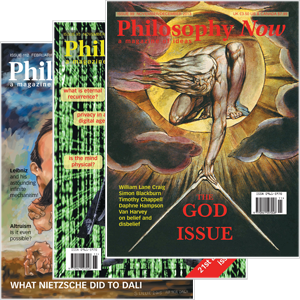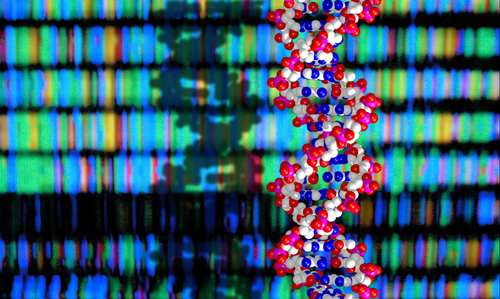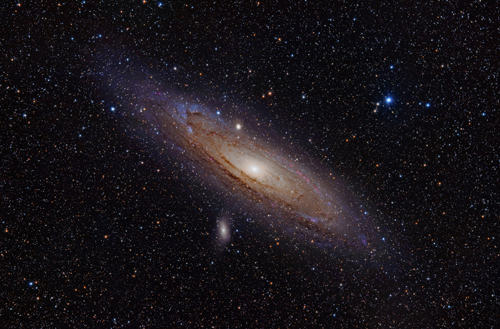
Your complimentary articles
You’ve read one of your four complimentary articles for this month.
You can read four articles free per month. To have complete access to the thousands of philosophy articles on this site, please
Books
The Universal History of Us by Tim Coulson
Grant Bartley replies philosophically to a scientific history of everything.
This book tells the story of humanity in the most epic terms. It’s the saga of how we got here, from the start of the universe until now. Specifically, The Universal History of Us (2024), which in the States is called The Science of Why We Exist, relates current scientific ideas of how everything came to be, including human beings. It starts with the Big Bang; goes through the creation of matter, stars and planets, the emergence of life; then the development of life up to great apes with abstract thinking, such as you and me. As Tim Coulson, Professor of Zoology at Oxford University, writes, he’s charting “the key things that had to happen for you and me to exist” (p.10).
Before I get into a philosophical response, let me say I think it’s great to have a comprehensive overview of recent scientific thinking about the causes of human existence in one volume, especially in such an accessible way, peppered as it is with stories from Coulson’s own life as a scientist. If that’s what you’re after, then buy this book.
Coulson starts by breaking down the scientific method. This makes sense if your wish is to convey an encyclopedic explanation of the world: start by saying why the method you’re using is capable of reliably yielding that explanation, and how that method works. I’m glad to say that the book opens with Thales of Miletus (fl. 6th C BC), the first Western philosopher of whose ideas we have records. Coulson here also identifies him as the first scientist, since he was the first to leave us theories derived from observing and testing nature. Indeed, the method of science is the following (this is my formulation, not Coulson’s): observe; form a hypothesis to explain the observation; test the hypothesis against further observations, often derived from experiment; replace the hypothesis if the observations don’t match; repeat until your hypothesis matches your observations; then observe something else, perhaps derived from this process; hypothesise about that; and so on, until the universe is explained. Coulson uses his PhD thesis about why trees appear where they do to illustrate this process. He also raises the important question of what is good evidence. Answer: we want unambiguous observations that can be made by many people and that come from repeatable tests.
My first comment is that the scientific process, and hence science, only applies to things to which the scientific process can be applied – which means, to testable observables. But many areas, such as logic and maths, which science presupposes, as well as morality and beauty, among others, are not scientifically testable. So science by definition cannot explain everything. My observation is that it’s incumbent on the scientific community to more carefully define science’s areas of applicability, as well as what is and isn’t scientific in those areas. However, this book does demonstrate well just how much can be explained by staying within science’s areas of expertise.
Let’s take a brief look at this explanation. Coulson first gives a run-down of the physicists’ picture of the world, telling us the story of CERN’s Large Hadron Collider (‘the world’s largest machine’) and the discovery of the Higgs boson before explaining the problem with the standard model of particle physics caused by its incompatibility with gravity. He then tells us how the forces and fundamental particles appeared as the universe expanded and cooled. Physicists currently think that at about 380,000 years old the universe was cool enough that atoms of hydrogen, helium and other elements could form, and light could travel through space. This is where the microwave background radiation comes from. Now stars could start to condense. From here Coulson moves on to explain molecules, or in other words, chemical reactions (having first explained how bananas produce anti-matter). His history of chemistry brings in Empedocles’ four elements theory (Aristotle later added a fifth element, or quintessence, which was spirit), and the atomic theory of Leucippus and Democritus, then alchemy (as practiced by Isaac Newton, among others), before moving on to scientific chemistry in the 1700s. Mendeleev produced the first periodic table in 1869. Pretty soon after, at the beginning of the twentieth century, quantum mechanics started to be formulated. Among other things, it explains chemistry. But if you want a description of the weirdness of the quantum world, as well as how it explains chemical reactions, you’ll have to read the book. The same goes for Coulson’s description of our place in the universe – including the extraordinary and only a century-old knowledge that we orbit an ordinary star among over a hundred billion in the Milky Way, which is only one galaxy among perhaps a trillion other galaxies in the observable universe alone. It’s a big world after all.

DNA Peter Artymiuk Source Wellcome Collection Creative Commons 4
Next, life itself. To explain the emergence of life on Earth, biologists need to uncover the earliest set of simple self-replicating chemical reactions to which we can trace back the present rather more complex set of self-replicators that we call ‘life’. Coulson communicates clearly the basic chemistry of life, and that the first ancestral set of biochemical reactions would have reproduced itself by recruiting the chemistry it was surrounded by – possibly around deep oceanic vents of hydrogen and sulphides (called ‘black smokers’), or in warm pools, as Darwin himself speculated. Coulson optimistically writes, “I suspect it won’t be too long before scientists produce simple life in the laboratory from a cocktail of simpler molecules” (p.195). But the proto-biologists as yet have no models of any such ‘simple’ early self-replicating systems, although many guess they’d have something to do with RNA. Regardless of which particular self-replicating (‘autocatalytic’) chemistry was involved, a huge mathematical problem emerges fast. Soon proteins are needed, since proteins are vital for cells to work. A protein is a chain of amino acids linked together in a specific way. There are hundreds of amino acids possible, but only 22 of them appear in proteins.
Let’s say our example protein is 500 amino acids long (although they can be longer or shorter). Even if we are only choosing from the 22, this would mean that the chances of making this specific protein by joining amino acids together at random is that of making one specific chain out of 22500 possible chains. This is a chance of one in 1.6x10671 , or one in 1.6 with 671 zeros after it! And that’s just to make one good protein. Even the simplest cell uses hundreds of different proteins. So add more zeroes. This means that, on the face of things, the odds of making the proteins necessary for cellular life at random are so infinitesimally tiny that it would take far, far longer than the lifetime of the universe (about 4 x 1017 seconds, so far), even if all the oceans were thick biochemical amino acid soup (which they weren’t). So yet another thing the proto-biologists have to discover, is what mechanisms drastically shorten the odds for whatever was the ancestor of RNA to first make the right proteins through combining amino acids – the speculations of Richard Dawkins in The Selfish Gene notwithstanding. Even if what he says there about ‘molecular competition’ is true, it still has to be demonstrated how far this brings down the odds of useful protein creation. In any case, the numbers imply there’s still a long way for science to go to explain how life kicked off.
The theory of evolution that has evolved from Darwin comes next. Here major questions still exist, such as explaining the origin of multicellular life, or why the dinosaurs temporarily (that is, for about 170 million years) triumphed over our own ancestors, the synapsids. I don’t have the space to give the more thorny issues on Darwin’s tree of life the carbon dioxide of publicity they deserve, except to say that the idea of species descent by modification seems proven by the fossil record – but the different idea, of it all only happening through natural and sexual selection and genetic drift, is only the working assumption of biology, and hasn’t been proven at all. (This is not the same as saying that biologists haven’t compellingly shown those factors to be a major part of the process.) The presently available supplements to evolutionary biology’s main working assumption may seem grossly unfeasible to you; but my point is, science is about demonstrating hypotheses, not assuming them, and a lack of imagination for viable alternatives is no proof of anything.
A related point concerns the relatively short life of scientific theories. We know from the history of science that scientific theories are frequently replaced, and that perhaps the best that many theories can hope for is to be absorbed into a more comprehensive one – in the way that Newton’s laws were absorbed into Einstein’s theories (not unlike how prokaryotic cells absorbed bacteria to become eukaryotic cells, so enabling complex life to develop). We just don’t know in advance what’s going to stay put in science, unevolving; what will be absorbed into some new, yet-unknown paradigm; and what will simply die off and fossilise in libraries. To me this implies that scientists ought to be less confident than they often appear about the status of their theories – especially those at the edge.
So, how much of this book’s currently scientifically-accepted story will still be scientific orthodoxy in two hundred years? Much of it, to be sure, since scientific models do become better attested over time – but we can’t reliably know which parts of it. As I said, the idea of the descent of species seems stable to me, as do many aspects of our physics theories; but a lot of the details of the story in this book are still up for grabs. A big problem comes for example from our mentioned present inability to marry gravity with quantum mechanics. For all we can now say, getting gravity in line with electromagnetism and the strong and weak nuclear forces may result in a rupture of the physicists’ view of reality as big as that caused by the introduction of quantum physics in the twentieth century. Watch this spacetime…

Andromeda Galaxy
© Hubble/NASA Public Domain
This brings us nicely to consciousness. As Coulson writes, “Understanding consciousness is one of science’s hardest challenges” (p.263). No kidding – though the hard problem is easy to express: ‘How do the electrical and chemical exchanges between your 86 billion neurons create all your experiences, thoughts, and feelings, including everything you’re experiencing now?’
Coulson says firstly that consciousness is useful for survival, since it enables organisms to make informed responses to environmental challenges. Moreover, he holds consciousness to be an inevitable result of physical activity as complex and organised and responsive as human brain activity.
Well, yes. But these facts do not approach explaining how physical activity creates mental content (which is the hard problem rephrased). Coulson does tell us the basics of what we know about the human brain, which is already a lot, including the beginnings of how brain chemistry works, and which aspects of the mind are correlated with which parts of the brain. But even if we came to know precisely which activity along which of our half a quadrillion synapses creates precisely which aspects of our experiences, this still wouldn’t explain how this brain activity creates consciousness. Why should it? Rather, we must first answer the metaphysical question, of what must be true about reality for physical activity to generate experience (you can see my theory of how the brain creates consciousness at youtu.be/7TJRV68Vrgw). The development of our distinct personalities is also still only vaguely understood scientifically, as Coulson elaborates. So consciousness is another area which still threatens major paradigm shifts in our understanding of the universe. Watch this mental space.
The book ends with a chapter titled ‘Why We Exist’. In it, to think through whether his existence was inevitable, Coulson discusses what was required for him to exist, including the anthropic principle in relation to the (very) fine tuning of the fundamental physical constants. Many other somewhat surprising factors must be fulfilled for intelligent life to exist, too – such as being in a star system like our own Solar System, with both gas giants and rocky planets. Coulson finally decides that (spoiler alert): “Our existence is down to luck, and that makes us special” (p.417).
The question ‘Why do we exist?’ is ambiguous, in the sense of “What do you mean by ‘Why’?”. In the fourth century BC, Aristotle laid out four types of answers to ‘Why?’ questions, or four types of causes. So, in answering the question, ‘Why is a human what they are?’ we might be asking, ‘What is a human being made of?’ This is Aristotle’s material cause. Next, ‘How did humans get here through time?’ is an example of Aristotle’s efficient cause, and the type of ‘Why?’ question this book is answering. Both these types of cause are well addressed in science, and Coulson could tackle what a human is made of in a similar systematic scientific way if the publishers were to ask for a sequel.
Aristotle’s formal cause might be said in massively paraphrasing modern terms to be answering the question, ‘What is it about a human being that means they’re a human being?’ Here we would looking for be a definition, in terms of unique set of ideas describing ‘human’ – similar to the way one might say that a ‘triangle’ is ‘a shape on a plane made up of three connecting straight lines’.
Aristotle’s final cause, is his final cause, which addresses the question ‘Why?’ in terms of something’s purpose for existing. This ‘teleological’ cause has not routinely been addressed by physical science ever since Darwin broke and reset the biological paradigm back in 1859. Coulson the zoologist also gives the idea of purpose short shrift.
As I said, being science-reliant, this book cannot answer questions that are outside the reach of science. Arguably the most important of these questions is, “What’s the meaning of life?” Yet even examining the process of life as a whole, as this book does, will not necessarily illuminate the purpose of that process, or the purpose of beings caught up in it, like us. Personally, I think God created the universe to make people whom he could adopt. But that’s another epic story entirely.
© Grant Bartley 2025
Grant Bartley is the Editor of Philosophy Now. His video series on consciousness is watchable at tinyurl.com/BartleyFreeWill.
• The Universal History of Us Tim Coulson, Michael Joseph, 2024, £10.99 pb, 464 pages









